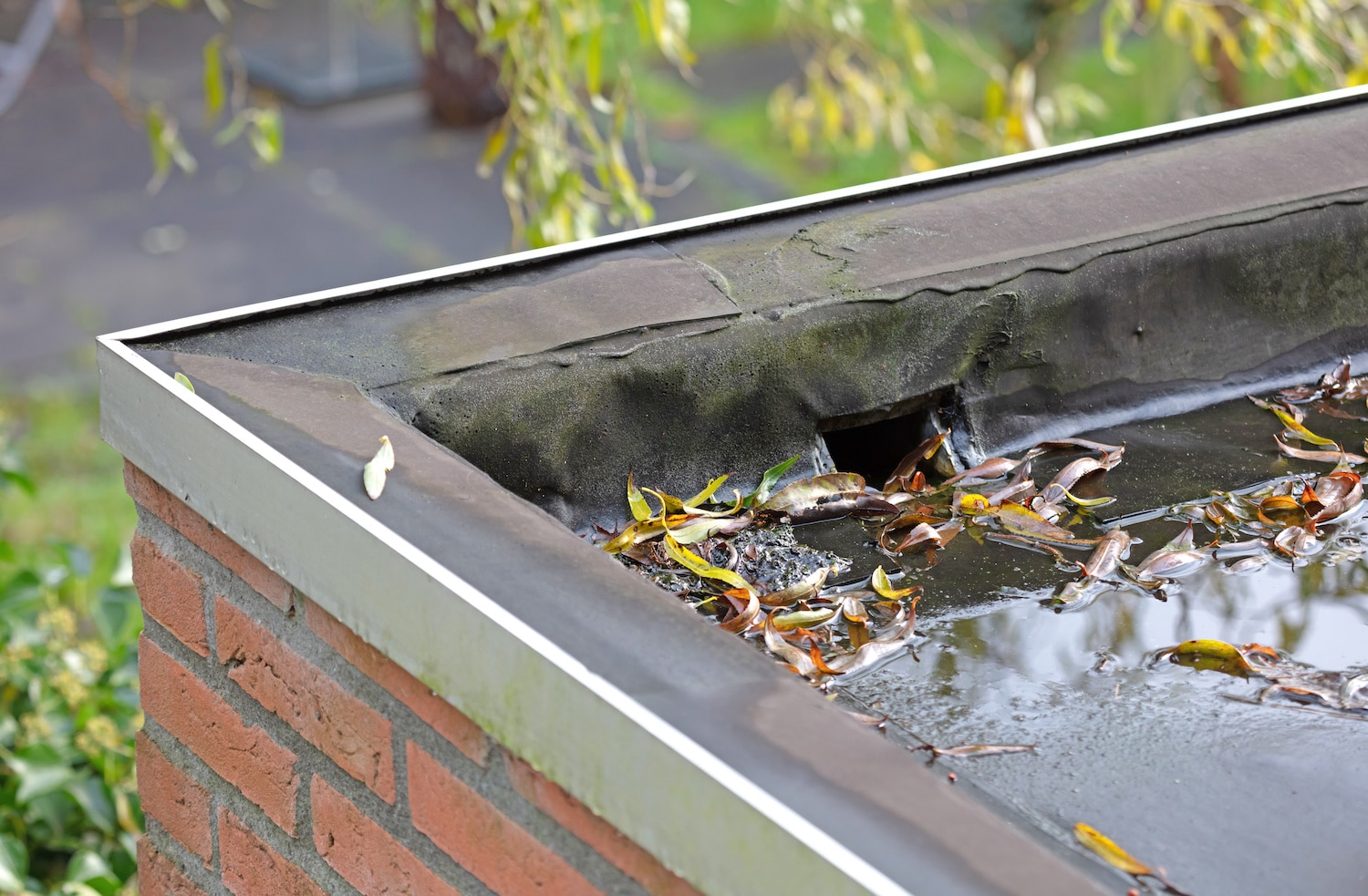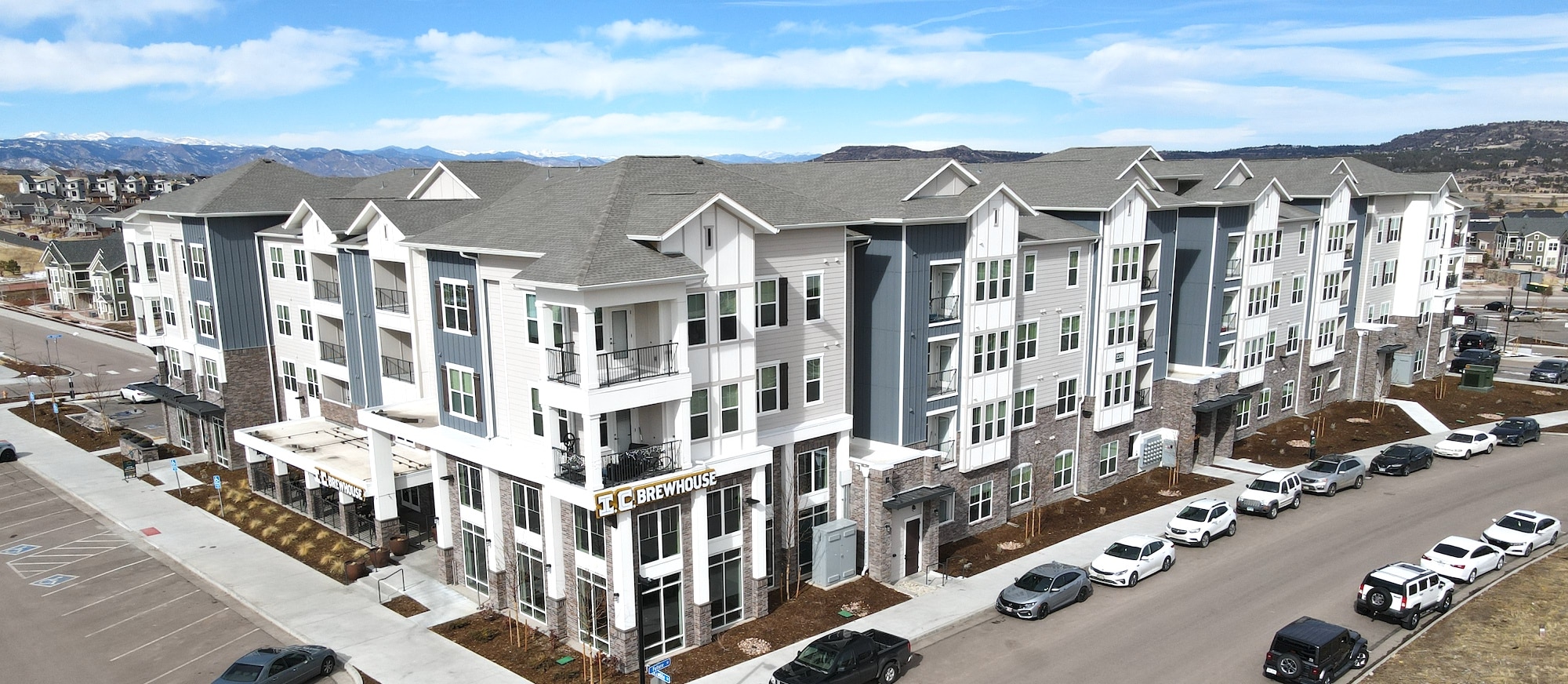properly slope a flat roof for drainage
Whether residential or commercial, if your “flat roof” were actually 100% flat, you would have constant water pooling and leaking. This can cause your roof to sag and collapse. Instead, flat roofs require at least a slight slope to allow rainwater and snowmelt to drain off properly. Without a proper slope, a flat roof can suffer water damage and sagging, resulting in the need for commercial roof repair or replacement.
This is why flat roofs are commonly referred to as low-slope roofs vs. their high-pitched counterparts. So what is the proper slope or pitch for a flat roofing system?
Ideally, a flat roof needs to slope at least one-quarter inch every one foot— allowing for a slope of 1 to 10 degrees. So how can you correctly slope a flat roof for drainage? Follow the tips in this guide.
Table of Contents
Why Is a Roof’s Slope So Important?
The roof slope is also known as the roof’s “pitch.” A roof’s pitch is determined by how much it rises vertically for every foot it extends horizontally. For example, a roof with a 4-in-12 pitch rises 4 inches for every 12 horizontal inches it extends.
Pitch is important because it affects two vital elements of your roof:
1. Drainage: A steeper-pitched roof will shed water and snow more quickly and efficiently than a lower-pitched roof. That’s why homes in snowy climates often have steeper pitched roofs than in warmer, rainier climates.

2. Cost: All else being equal, a lower-pitched roof will be less expensive to build than a steeper-pitched roof. That’s because there is less material required to install. [properly slope a flat roof for drainage]
That being said, some other essential considerations determine how high or low a roof’s pitch should be.
Things to Consider When Determining Roof Pitch 📐
In addition to drainage and cost, there are a few other things you need to take into account when deciding on the pitch of your roof:
Your Roof’s Design 🏠
The first thing you need to consider is the overall design of your roof. The roof’s pitch should complement the style of your home or business. A steeper-pitched roof may not be the best choice for a ranch-style home, while a very low-pitched roof might not be the best option for a Victorian-style home. Your contractor can help figure this out too. [properly slope a flat roof for drainage]
The Roofing Material Used
There are five common flat roof materials used, each with unique benefits and intentions, which can affect the slope as well. These include:
- BUR (Built up Roofing)
- PVC (Polyvinyl Chloride)
- EPDM (Ethylene Propylene Diene Monomer)
- Modified Bitumen Roofing
- TPO (Thermoplastic Polyolefin)
The Amount of Annual Rainfall 🌧️
If you live in an area with a lot of rainfall, consider a steeper-pitched roof to help ensure that water is shed quickly and efficiently. On the other hand, if you live in an area with very little rainfall, you might be able to get away with a lower-pitched roof. Properly slope a flat roof for drainage

Likelihood of Snow and Ice ❄️
In climates that experience a lot of heavy snow and ice, you’ll want to make sure your roof can shed these materials quickly and efficiently. You might lean more towards a 10-degree slope for your flat roof vs. a much shallower 1-degree. [properly slope a flat roof for drainage]
The Number of Roof Accessories
Things like skylights, vents, pipe boots, etc., can all affect how your roof functions and how well it drains. Navigating around these is crucial but also ensure their flashing and sealant remain intact and don’t have leaks if you decide to go with a lower slope.
How to Properly Slope a Flat Roof for Drainage
As we said before, a good rule of thumb for a flat roof is to slope one-quarter of an inch (at least) every foot. This slope allows for adequate drainage while still being cost-effective and easy to install. There are a few ways you can achieve this slope on an existing roof:
1. Use an Underlayment
If your roof is being re-roofed, you can create the necessary slope by installing slightly thicker underlayment on one edge than the other. This will create a subtle slope allowing water to run off your roof. [properly slope a flat roof for drainage]
2. Use Pavers
If you have a concrete or asphalt roof, you can create a slope by installing pavers on top of your roof. The pavers should be installed with a thicker edge slightly higher than the thinner edge. This slight slope can help with water drainage. [properly slope a flat roof for drainage]

3. Upgrade Your Drainage System
Install a flat roof drainage system to help ensure that water is properly drained from your roof. The most common type of drainage system is a gutter system. Gutters are installed along the edge of your roof and collect water as it runs off of your roof. The water is then redirected away from your home or business through a downspout. The angles of your gutter system can help a lot with the proper amount of slope to help divert water away from areas prone to water ponding. Properly slope a flat roof for drainage
Work With a Reputable Flat Roofing Team
Tectum Roofing is your local commercial (and residential) flat roof specialist. Regarding the pitch of your roof, we can help you ensure you have the proper slope and drainage for our climate and roof. If you’re looking for a completely new build— we can do that too! Reach out to us today for a FREE roof evaluation.



